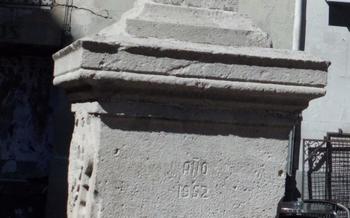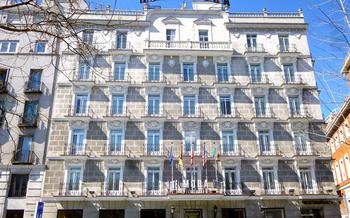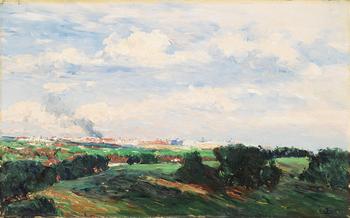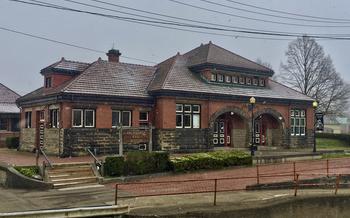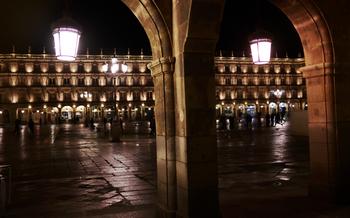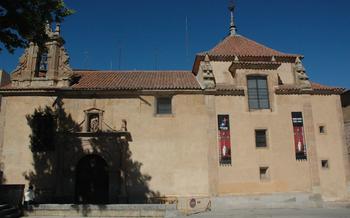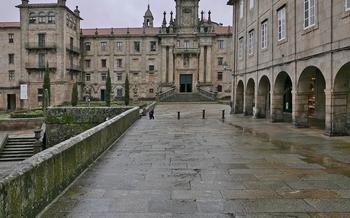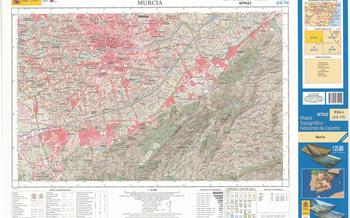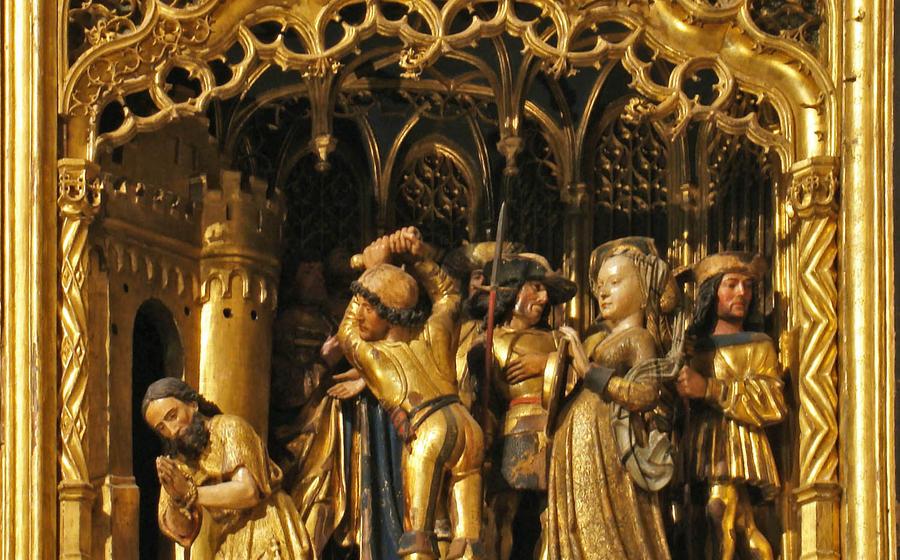
Museo Anatómico
- Museo Anatómico de Valladolid: A Journey into the Human Body
- Educational and Scientific Value
- Historical Context
- Unique Exhibits
- Interactive Displays
- Guided Tours
- Temporary Exhibitions
- Research Facilities
- Educational Programs
- Accessibility
- Location and Transportation
- Hours of Operation and Admission Fees
- Souvenir Shop
- Nearby Restaurants and Cafés
Museo Anatómico de Valladolid: A Journey into the Human Body
In the heart of Valladolid, nestled within the historic walls of the University of Valladolid, lies a hidden gem that invites visitors on a fascinating journey into the intricacies of the human body. The Museo Anatómico, established in the late 19th century, houses an extraordinary collection of anatomical specimens, models, and medical instruments that provide a glimpse into the history of medicine and the wonders of human anatomy.
The museum's collection was meticulously assembled over decades by renowned anatomists and physicians who sought to advance the understanding of human biology. Today, it comprises over 2,000 specimens, including preserved organs, bones, and anatomical models, many of which date back to the early days of medical education. Among the highlights of the collection are a complete human skeleton, a detailed model of the circulatory system, and a collection of wax anatomical models that vividly depict the human body in various states of health and disease.
A visit to the Museo Anatómico is a must for anyone interested in anatomy, medicine, or the history of science. The museum's exhibits offer a unique opportunity to learn about the complexities of the human body, appreciate the advancements made in medical science, and gain a deeper understanding of our own mortality. Whether you're a medical student, a healthcare professional, or simply someone fascinated by the human form, the Museo Anatómico promises an unforgettable and educational experience.
Educational and Scientific Value
The Museo Anatómico is not only a fascinating place to visit, but it also plays a crucial role in medical education and research. The museum's extensive collection of specimens and exhibits serves as a valuable resource for medical students, researchers, and healthcare professionals.
The museum's exhibits provide a comprehensive overview of human anatomy and physiology, from the skeletal system to the nervous system. Visitors can learn about the different organs and tissues of the body, as well as how they work together to maintain homeostasis. The exhibits also highlight the complexities of the human body and the challenges that medical professionals face in treating diseases and injuries.
The museum's collection is particularly significant for understanding human anatomy and physiology. It includes a wide range of specimens, from normal to pathological, that provide researchers with valuable insights into the structure and function of the human body. The collection also includes a number of rare and unique specimens, such as a complete skeleton of a giant squid and a preserved heart with a congenital defect.
One of the most noteworthy exhibits in the museum is the "Body Worlds" exhibition. This exhibition features a collection of human bodies that have been preserved using a process called plastination. The bodies are displayed in a variety of poses, allowing visitors to see the muscles, bones, and organs in great detail. The "Body Worlds" exhibition has been seen by millions of people around the world and has been praised for its educational value and its ability to change the way people think about the human body.
Historical Context
The study of anatomy and medicine has a rich history in Valladolid, dating back to the founding of the University of Valladolid in 134The university's medical school was one of the first in Europe, and it quickly became a center for anatomical research and teaching. The Museo Anatómico is a direct descendant of this early tradition of anatomical study in Valladolid.
The museum's collection was founded in the 16th century by Dr. Andrés Laguna, a professor of anatomy at the University of Valladolid. Laguna was a pioneer in the field of anatomy, and he was one of the first physicians to use dissection to study the human body. The collection that he assembled over the course of his career formed the basis of the Museo Anatómico.
The museum has been housed in its current location since 184The building was originally a hospital, and it was converted into a museum in the 19th century. The museum has undergone several renovations and expansions over the years, but it has always remained faithful to its original mission of promoting the study of anatomy and medicine.
One of the most fascinating aspects of the Museo Anatómico is its collection of historical medical instruments. These instruments, which date from the 16th to the 19th centuries, provide a glimpse into the evolution of medical science. Visitors can see everything from early surgical tools to the first microscopes.
The Museo Anatómico is a treasure trove of history for anyone interested in anatomy, medicine, or the history of science. The museum's collection is a testament to the rich tradition of anatomical study in Valladolid, and it continues to be a valuable resource for students and researchers alike.
Unique Exhibits
The Museo Anatómico is home to a number of unique and striking exhibits that are sure to capture the attention of visitors. These include a collection of over 200 skulls from various species, including humans, animals, and even dinosaurs. The museum also houses a collection of medical instruments from different eras, including a set of 19th-century surgical tools and a replica of a medieval apothecary's shop.
One of the most fascinating exhibits is the "Anatomical Venus", a life-size wax model of a woman that was created in the 18th century. The model is incredibly detailed and shows the inner workings of the human body, including the muscles, organs, and blood vessels.
Another highlight is the "Giant Skeleton", which stands over 8 feet tall and is believed to be the skeleton of a giant who lived in the Middle Ages. The skeleton is a popular attraction for visitors and is often used for educational purposes.
These unique exhibits make the Museo Anatómico a must-visit destination for anyone interested in anatomy and medicine. They provide a glimpse into the complexities of the human body and offer a unique perspective on the history of medical science.
Interactive Displays
The Museo Anatómico offers a variety of interactive exhibits that enhance the visitor experience and make learning about anatomy more engaging. These exhibits allow visitors to explore the human body in a hands-on way, reinforcing what they have learned from the museum's displays.
One popular interactive exhibit is the "Body Explorer," a touch-screen table that allows visitors to virtually dissect a human body. Using their fingers, visitors can peel away layers of skin, muscle, and bone to reveal the underlying structures. The Body Explorer provides a unique and interactive way to learn about human anatomy and how the different systems work together.
Another popular exhibit is the "3D Anatomy Viewer," which allows visitors to view three-dimensional models of the human body. Visitors can rotate the models, zoom in on specific areas, and learn about the different structures in detail. The 3D Anatomy Viewer is a valuable tool for students and anyone interested in learning more about human anatomy.
In addition to these touch-screen exhibits, the museum also offers a variety of hands-on activities. Visitors can examine real human bones and organs, and they can even try their hand at suturing and other medical procedures. These hands-on activities provide a unique and memorable way to learn about anatomy and medicine.
Guided Tours
The Museo Anatómico offers guided tours that provide visitors with a deeper insight into the museum's collection and history. These tours are led by knowledgeable guides who share their expertise on anatomy, medicine, and the museum's unique exhibits. Guided tours are available in several languages, including English and Spanish, and can be booked in advance or on the day of your visit.
The cost of a guided tour is typically included in the museum's admission fee. Tours typically last for about an hour and cover the highlights of the museum's collection, including the anatomical specimens, historical instruments, and interactive exhibits. Visitors can ask questions and receive personalized attention from the guide.
Taking a guided tour of the Museo Anatómico is a great way to learn more about the human body, the history of medicine, and the museum's unique collection. Whether you're a student, a medical professional, or simply someone with an interest in anatomy, a guided tour is a worthwhile experience.
Here are some tips for making the most of your guided tour:
- Book your tour in advance, especially if you're visiting during peak season.
- Arrive at the museum a few minutes early to check in and meet your guide.
- Wear comfortable shoes, as you'll be doing a lot of walking.
- Bring a camera to capture the unique exhibits.
- Ask questions and take notes during the tour.
- Enjoy the experience!
Temporary Exhibitions
The Museo Anatómico also hosts temporary exhibitions that complement the permanent collection and offer visitors a fresh perspective on anatomy and medicine. These exhibitions often focus on specific themes or topics, such as the history of medical instruments, the anatomy of a particular organ system, or the latest advances in medical research.
Past temporary exhibitions have included "The Body in Motion," which explored the intricate workings of the musculoskeletal system, and "The Brain: A Window into the Soul," which delved into the mysteries of the human mind. These exhibitions have been highly successful, attracting large numbers of visitors and generating significant media attention.
To find out about upcoming temporary exhibitions, visitors can check the museum's website or social media pages. The museum also offers a newsletter that provides subscribers with regular updates on upcoming events and exhibitions.
Research Facilities
The Museo Anatómico also boasts impressive research facilities, making it a hub for anatomical and medical research. Researchers from around the world utilize the museum's extensive collection and resources to conduct groundbreaking studies in various fields. The museum's research facilities include state-of-the-art laboratories equipped with advanced technologies for studying human anatomy, physiology, and pathology. Researchers have access to a vast collection of specimens, including rare and unique anatomical preparations, which serve as invaluable resources for their investigations. The museum's research environment fosters collaboration and encourages interdisciplinary approaches, leading to significant advancements in our understanding of the human body and its complexities.
Educational Programs
The Museo Anatómico offers a variety of educational programs to promote the study of anatomy and medicine. These programs are designed for students of all ages, from elementary school to medical school. The museum's educational programs include workshops, lectures, and courses.
Workshops are offered on a variety of topics, such as human anatomy, dissection, and medical imaging. These workshops are typically hands-on and allow participants to learn about anatomy in a fun and interactive way.
Lectures are given by experts in the field of anatomy and medicine. These lectures cover a wide range of topics, such as the history of anatomy, the latest advances in medical research, and the ethical implications of medical technology.
Courses are offered on a variety of topics, such as gross anatomy, histology, and embryology. These courses are typically more in-depth than workshops and lectures and are designed for students who are interested in pursuing a career in medicine.
The museum's educational programs are an excellent way to learn about anatomy and medicine. These programs are offered at a variety of levels, so there is something for everyone. Whether you are a student, a teacher, or a lifelong learner, you are sure to find something of interest at the Museo Anatómico.
Accessibility
The Museo Anatómico is committed to making its exhibits and programs accessible to all visitors, regardless of their abilities or disabilities. The museum features wheelchair ramps, elevators, and audio guides to ensure that everyone can enjoy and learn from the collection. The staff is also trained to assist visitors with disabilities and to answer any questions they may have.
In addition to its physical accessibility features, the museum also offers a variety of programs and services designed to make learning about anatomy and medicine more accessible to everyone. These include workshops and lectures that are open to the public, as well as educational programs for schools and groups. The museum also offers a variety of online resources, including virtual tours and exhibits, that can be accessed by anyone, anywhere in the world.
For visitors with disabilities, the Museo Anatómico is a welcoming and supportive environment where they can learn and explore at their own pace. The museum's staff is dedicated to ensuring that everyone has a positive and enriching experience at the museum.
Location and Transportation
The Museo Anatómico is conveniently located in the heart of Valladolid, at Plaza del Poniente 1It is easily accessible by public transportation, with several bus lines stopping nearby. The bus station is just a short walk away, and the train station is also within walking distance.
For those arriving by car, there are several parking garages in the vicinity. The closest one is the Plaza del Poniente parking garage, located just across the street from the museum. On-street parking is also available, but it can be limited, especially during peak hours.
The museum is situated in a charming neighborhood, surrounded by historic buildings, shops, and restaurants. Visitors can easily combine their visit to the museum with a stroll through the city center or a bite to eat at one of the many nearby eateries.
Hours of Operation and Admission Fees
The Museo Anatómico is open to the public from Tuesday to Sunday, with varying hours depending on the season:
- Summer: 10:00 am to 2:00 pm and 5:00 pm to 8:00 pm
- Winter: 10:00 am to 2:00 pm and 4:00 pm to 7:00 pm
Admission fees are as follows:
- Adults: €5
- Children (6-12 years): €3
- Students and seniors (65+ years): €4
Free admission is granted to children under 6 years old and to visitors with disabilities.
To avoid crowds and ensure a more intimate experience, it is advisable to visit the museum during the weekdays or during the morning hours on weekends. The museum is closed on Mondays and on public holidays.
Souvenir Shop
The Museo Anatómico has a well-stocked souvenir shop where visitors can purchase a variety of mementos and gifts related to anatomy and medicine. The shop offers a wide range of items, including books, posters, anatomical models, jewelry, and clothing. The proceeds from the souvenir shop help to support the museum's mission and programs, ensuring that it can continue to provide educational and research opportunities for visitors and scholars alike.
When visiting the souvenir shop, be sure to check out the unique and unusual items that are available. For example, you can purchase a replica of a human skull, a set of anatomical flashcards, or a T-shirt with a humorous medical pun. The shop also offers a variety of books on anatomy and medicine, making it a great place to find resources for further study or to learn more about the human body.
Nearby Restaurants and Cafés
After delving into the intricacies of human anatomy, you may find yourself craving nourishment for both body and soul. Luckily, the area surrounding the Museo Anatómico offers a diverse culinary landscape to satisfy every palate. From traditional Spanish cuisine to international flavors, there's something for everyone within easy walking distance of the museum.
For those seeking a taste of authentic Spanish cuisine, the nearby Plaza Mayor is a haven of culinary delights. Here, you can savor traditional dishes like paella, tapas, and cocido at one of the many charming restaurants that line the square. For a more intimate dining experience, venture down the side streets and discover hidden gems tucked away from the tourist crowds.
If you're in the mood for something a little different, the streets surrounding the museum offer a tempting array of international cuisine. From Italian pizzerias to Japanese sushi bars, there's something to suit every taste and budget. Don't miss the opportunity to sample the local wines, which are renowned for their exceptional quality.
No matter what your culinary preferences, you're sure to find something to satisfy your taste buds near the Museo Anatómico. So, after exploring the wonders of the human body, take some time to savor the delicious offerings of Valladolid's culinary scene.
